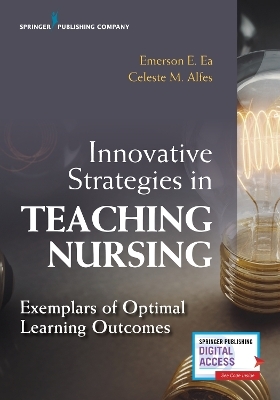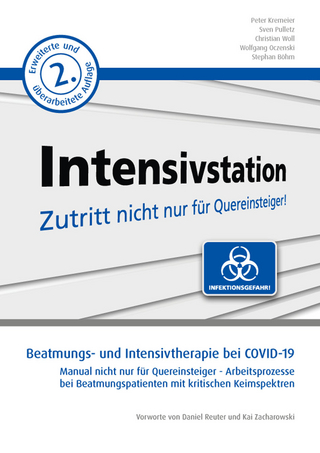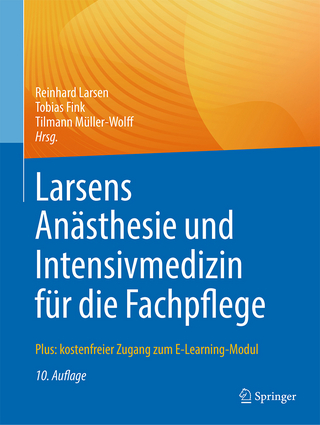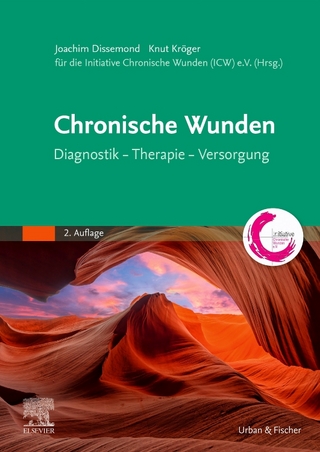
Innovative Strategies in Teaching Nursing
Springer Publishing Co Inc (Verlag)
978-0-8261-6109-3 (ISBN)
This innovative text delivers more than 40 evidence-based teaching strategies that educators can use to engage nursing students and enhance their learning in a variety of teaching environments. It provides a wealth of new teaching designs both novice and experienced faculty can use to inspire and motivate learners in the classroom, through simulation, online, and in community or hospital settings. Strategies developed by leading clinical nursing and health educators characterize nursing education as a dynamic and highly specialized field that stems from meaningful interactions between learners and educators.For ease of comparison, each practical teaching strategy is organized in a consistent format including student-centered competencies and nursing education accreditation standards. The text also provides a template and a step-by-step guide on how to customize the strategies to fit the needs of learners and educators. The designs include an emphasis on applications of technologically-enhanced innovations in nursing education, interdisciplinary collaboration, and the use of the humanities and art. This text answers the ongoing call for inter-professional education necessary to prepare the next generation of expert nurses in the rapidly changing environment of healthcare.
Key Features:
Evidence-based research used in the development of each teaching strategy
Groundbreaking practices in a variety of environments will challenge the discipline and spark additional innovations throughout Nursing
Chapters consistently provide optimal learning outcomes and teaching objectives, preparation resources, modules of implementation, methods to evaluate the effectiveness of each strategy, outlined limitations, and accreditation standards
Downloadable sample materials provide case scenarios, templates, and other examples for each strategy
Instructor's Manual included!
Emerson E. Ea, DNP, PhD, APRN, CNE, is clinical associate professor and director of the undergraduate program at New York University Rory Meyers College of Nursing. He obtained his Doctor of Nursing Practice degree from Case Western Reserve University and PhD from Duquesne University School of Nursing. He completed his Master of Science in Nursing from Long Island University and his Bachelor of Science in Nursing from the University of St. La Salle, Philippines. His scholarship interests include immigrant health, especially cardiovascular health among Filipino Americans, and global health and nursing education. He is an active member of the Philippine Nurses Association, the Asian American and Pacific Island Nurses Association, and the Sigma Theta Tau and Phi Kappa Phi honor societies. He was senior manager for evidence-based practice and nursing research at Mount Sinai Hospital, New York, New York, from 2011-2013; a Jonas Policy Scholar for the American Academy of Nursing Cultural Competence and Health Equity Expert Panel from 2014-2016; and he is currently a Fellow of the American Association of Colleges of Nursing Leadership in Academic Nursing Program (LANP). He is board certified in nursing education by the National League for Nursing. Dr. Ea has authored/co-authored articles on topics that relate to work- and personal-related outcomes among internationally educated nurses, Filipino immigrant health, gerontologic nursing, and nursing education and practice. He received the Nursing Research Award from the Philippine Nurses Association of New York in 2012; the New York University Rory Meyers College of Nursing Distinguished Faculty Award in 2011, the Most Outstanding Nursing Alumnus Award (Nursing Research Category) from the University of St. La Salle, Philippines; and the 2015 Asian American Pacific Islander Nurses Association Scholarship Award. He is currently board secretary for Kalusugan Coalition, an organization dedicated to creating a unified voice to improve the health of the Filipino American community in the New York/New Jersey area through network and resource development, educational activities, research, community action, and advocacy. He was recognized in 2016 by the president of the Borough of Queens, New York, for his contribution to the Filipino American community.
Contributors
Foreword Joyce J. Fitzpatrick, PhD, MBA, RN, FAAN, FNAP, FAANP
Preface
Acknowledgments
PART I: DIDACTIC TEACHING STRATEGIES
1. Cultivating Diagnostic Decision-Making With Problem-Based Learning: From Most Likely to Least Likely
2. Nursing Tutorials for Student Success
3. Critical Thinking Innovation and the Nursing Process: Sunflower Diagram
4. Prescriptive Journaling
5. PEARLS: Modified Problem-Based Learning for Building Advanced Scientific Foundations, Promoting Critical Thinking, and Facilitating Role Transition in Early Advanced Practice Nursing Students
6. Self-Care Strategies to Foster Well-Being
7. Nursing Ethics and Health Policy Poster Assignment and Poster Session
8. Public Health Crisis Capstone Presentations to Learn Public Health Nursing Competencies and Roles
9. Integrating Ethics Across the Curricula: Innovations in Undergraduate and Graduate Nursing Education
10. Team-Based Learning in a First-Year Nursing Informatics Course
11. Human-Centered Design Thinking and Clinical Workflows in Nursing Informatics
12. Conducting a Health Impact Assessment to Develop Population Health Competencies: An Example of Problem-Based Learning
13. Communicating With Vulnerable Youth and Families
14. Integrating NCLEX® and Practice Readiness in an Undergraduate Leadership Course
15. Critical Reflections
16. Facilitating Active Learning and Critical Thinking in Large Classrooms Utilizing Collaborative Learning and Technology
17. From Cyberspace to Classroom Space
18. Bringing Research to Life for Undergraduate Nursing Students Using a Design Thinking Model
19. Innovative Use of Concept Care Planning in a Large Class
20. Hot Topic Thinkoffs: Classroom-Based Experiential Learning Through Student Nurse Debates
21. Refining Assessment Skills With Artwork and Photographs
22. Innovations in SANE Program Education: Introduction of Mock Trials
23. Role Play for Qualitative Interviewing Skills
24. Pathophysiology in Action Through the Use of Unfolding Case Studies
25. Developing Advocacies in Nursing Courses: Nurturing Compassion and Leadership
26. Using the Power of Art to Teach Evidence-Based Practice
PART II: CLINICAL/SIMULATION TEACHING STRATEGIES
27. Simulations for the APRN: Utilizing a Standardized Template to Ensure Best Practices
28. Mock Page Exercise for the Development of Communication and Clinical Decision-Making Skills
29. Use of Case Scenarios and Simulation in Teaching Critical Care Nursing
30. Learning Motivational Interviewing Through the Experiential Lenses of Provider and Patient
31. Use of Case Scenario and Tabletop Exercise in Teaching Field Triage in Disaster Nursing
32. Interprofessional Simulation: Perioperative Crisis Management
33. The Use of Reflective Journaling to Decrease Anxiety in Providing End-of-Life Care in the Critical Care Clinical Setting
34. Integrating Interprofessional Education Into Public Health Clinical Settings
35. Case Scenarios and Simulations for Student Success
36. Integration of Mixed Modality Technology to Promote Learning in the Use of Longitudinal Rolling Case Studies
37. Effective Debriefing in Simulation
38. Standardized Handoff for Quality and Safety
39. Bedside Rounding: A Patient- and Learner-Centered Post-Conference
40. Think Aloud and Expert Modeling
41. Teaching Essential Communication Strategies for a Comprehensive Well-Child Visit Using Simulation With Family Nurse Practitioner Students
42. Interprofessional Clinical Education for APRNs and Dental Students
43. Patient Care in an Intense Situation Within an Unstructured Environment
44. Strategies to Facilitate Learning in the Large Classroom: Team-Based Learning and the Use of Professional Social Media
Index
| Erscheinungsdatum | 01.05.2020 |
|---|---|
| Verlagsort | New York |
| Sprache | englisch |
| Maße | 152 x 229 mm |
| Gewicht | 615 g |
| Themenwelt | Pflege ► Fachpflege ► Anästhesie / Intensivmedizin |
| ISBN-10 | 0-8261-6109-X / 082616109X |
| ISBN-13 | 978-0-8261-6109-3 / 9780826161093 |
| Zustand | Neuware |
| Haben Sie eine Frage zum Produkt? |
aus dem Bereich


